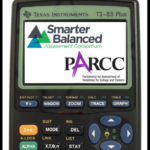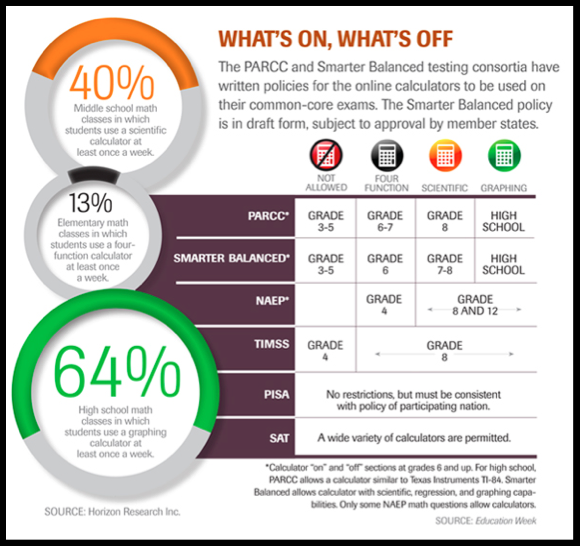 If you asked five educators, each from a different state, what their opinion of calculator usage on standardized tests is, there’s a good chance you would get five different answers. Up to this point, each state has individually set guidelines for how and when students are able to use calculators on the tests.
If you asked five educators, each from a different state, what their opinion of calculator usage on standardized tests is, there’s a good chance you would get five different answers. Up to this point, each state has individually set guidelines for how and when students are able to use calculators on the tests.
But now, with such a large number of states adopting either the PARCC or Smarter Balanced assessment consortiums to test Common Core math standards understanding, the calculator usage guidelines are going to become much more uniform from state-to-state. With this in mind, Erik W. Robelen of Education Week recently posted an in-depth blog post detailing what each state (that adopted and stuck with the Common Core math standards) can expect regarding calculator ground rules. Below is the ‘cliff notes’ version of what you can expect regarding calculator usage from each test.
The Common Core Assessment Calculator Breakdown
Below, I’ve broken the calculator guideline information provided by the two testing consortiums (and from the Education Week blog post) into two sections: ‘Similarities between PARCC and Smarter Balanced‘ and ‘Differences between PARCC and Smarter Balanced‘.
-
Similarities between PARCC and Smarter Balanced:
- Both assessments restrict calculator usage on the grade 3-5 tests
- On grades 6 and above, there will be calculator “on” sections and calculator “off” sections, depending on what math functionalities are involved/required
- Both allow for the use of a graphing calculator (like a Texas Instruments TI-84 or similar model) at the high school level (and only the high school level)
- Both also intend to provide an online graphing calculator to students taking the online version of the assessments
- Both also intend to provide an online graphing calculator to students taking the online version of the assessments
-
Differences between PARCC and Smarter Balanced:
- The middle school requirements vary significantly between the two tests.
- PARCC: grade 6-7 students must use a four function calculator, grade 8 students can use a scientific calculator
- Smarter Balanced: grade 6 students can only use a four function calculator, grade 7-8 students can use a scientific calculator
- Smarter Balanced does not allow hand-held calculator use for students taking the online version of the test.
- PARCC allows hand-held calculator usage for both the paper version and the online version (for 2014-2015 testing year, will reassess following first year).
- The middle school requirements vary significantly between the two tests.
- Here is a graphical breakdown of what type of calculator each assessment allows per grade level (image from Education Week):
Questions Still Loom Regarding Calculator Usage and Fairness
Though the calculator usage picture is becomming more clear, educators still raise many valid questions, including:
- When specifically are students able to use the devices and what students are elligible for accomodations?
- Are educators responsible for providing calculator training (in addition to the already-established math curriculum)?
- Do students who are more adept with calculators have an advantage?
- Are schools required to provide calculators to students who do not bring their own/Should schools allow students to bring calculators from home?


0 Comments